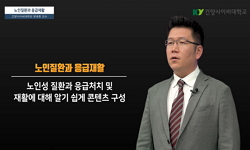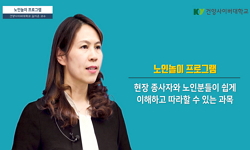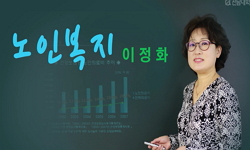2021년 기준 한국의 노인인구는 약 8,537,000명으로 전체인구의 약 16.5%에 달한다. 이는 2060년까지 18,815,000명으로 증가할 것으로 예상된다. 이는 전체인구의 약 43.6%에 달할 것이다. 생산인구 100...
http://chineseinput.net/에서 pinyin(병음)방식으로 중국어를 변환할 수 있습니다.
변환된 중국어를 복사하여 사용하시면 됩니다.
- 中文 을 입력하시려면 zhongwen을 입력하시고 space를누르시면됩니다.
- 北京 을 입력하시려면 beijing을 입력하시고 space를 누르시면 됩니다.

노인의료비 감소를 위한 대안으로 제시되는 요양병원에 관한 연구 = A Study on Nursing Hospitals as an Alternative for Reducing Medical Expenses for the Elderly
한글로보기https://www.riss.kr/link?id=A108744931
- 저자
- 발행기관
- 학술지명
- 권호사항
-
발행연도
2023
-
작성언어
Korean
- 주제어
-
등재정보
KCI등재
-
자료형태
학술저널
-
수록면
21-26(6쪽)
- 제공처
-
0
상세조회 -
0
다운로드
부가정보
국문 초록 (Abstract)
2021년 기준 한국의 노인인구는 약 8,537,000명으로 전체인구의 약 16.5%에 달한다. 이는 2060년까지 18,815,000명으로 증가할 것으로 예상된다. 이는 전체인구의 약 43.6%에 달할 것이다. 생산인구 100명이 부양하는 노인인구 수를 의미하는 노년부양비는 2021년에 23.0에서 2060년에는 91.4로 증가할 것으로 예상된다. 의료기관 중에서 가장 많은 수의 병실과 병상을 보유하고 있어서 가장 많은 입원환자를 수용할 수 있는 의료기관이 어느 곳인지 한번 살펴보고, 불필요한 입원비 지출을 줄일 수 있도록 효율적으로 관리되고 있는지를 살펴본다면, 미래의 불필요한 노인 의료비 지출을 줄이는데, 어느 정도 도움이 될 것이다. 의료비 상승에 가장 영향을 준다고 알려진 65세 이상 노인 인구 증가와 노인 의료비 증가의 상관관계를 베이지안 회귀분석 하여 노인 인구 증가가 노인 의료비 증가에 미치는 영향을 살펴보고자 한다. 65세 이상 노인 인구수 증가와 노인의료비 증가의 상관관계는 베이지안 회귀분석을 한 결과 회귀계수의 값은 2.26이므로 65세 이상 노인 의료비 비율은 노인인구 비율의 2배로 나타났다. 전체 인구 대비 노인인구 비율 예상치와 전체 의료비 대비 노인 의료비 비율 예상치의 상관관계를 베이지안 회귀분석과 일반회귀분석으로 살펴본 결과 회귀계수는 약 2.2이므로 65세 이상 노인 의료비 증가율은 노인 인구증가율의 2배로 나타났다. 결론적으로 65세 이상 노인 의료비 증가의 가장 큰 원인은 노인 인구 증가 때문이라는 것을 알 수 있다. 기존의 선행연구들에 따르면, 요양병원의 저렴한 본인부담률과 본인부담금 상환제는 요양병원 입원환자들의 본인부담금을 더욱 낮추어 주는 효과가 있고, 이는 의도치 않게 사회적 입원을 부추긴다는 지적이 있었다. 해외사례들을 볼 때, 요양병원 입원환자들에 대해 정기적인 입원기준 적합성 판정과 경증 환자에 한해 장기 입원시 기간에 비례하여 본인부담금을 상향 조절하여 사회적 입원 즉 직접적인 의료서비스가 필요하지 않지만, 단순 돌봄 서비스가 필요해서 입원한 환자들의 불필요한 장기 입원을 통제하는 방안을 제안하고자 한다.
다국어 초록 (Multilingual Abstract)
As of 2021, the elderly population in Korea is about 8,537,000, accounting for about 16.5% of the total population. This is expected to rise to 18,815,000 by 2060. This will amount to about 43.6% of the total population. The elderly support ratio, whi...
As of 2021, the elderly population in Korea is about 8,537,000, accounting for about 16.5% of the total population. This is expected to rise to 18,815,000 by 2060. This will amount to about 43.6% of the total population. The elderly support ratio, which refers to the number of elderly people supported by 100 working-age people, is expected to increase from 23.0 in 2021 to 91.4 in 2060. If we take a look at which medical institution can accommodate the most inpatients because it has the largest number of hospital rooms and beds among medical institutions, and if we look at whether it is efficiently managed to reduce unnecessary hospitalization expenses, It will help to some extent to reduce the elderly medical expenses. Bayesian regression analysis of the correlation between the increase in the elderly population aged 65 and over and the increase in medical expenses for the elderly, which is known to have the most influence on the increase in medical expenses, was conducted to examine the effect of the increase in the elderly population on the increase in medical expenses for the elderly. As a result of Bayesian regression analysis, the correlation between the increase in the number of elderly people aged 65 years and older and the increase in medical expenses for the elderly was performed, and the value of the regression coefficient was 2.26. As a result of examining the correlation between the expected ratio of the elderly population to the total population and the ratio of the elderly population to total medical expenses through Bayesian regression analysis and general regression analysis, the regression coefficient is about 2.2, so the growth rate of medical expenses for the elderly aged 65 years or older is twice that of the elderly population. In conclusion, it can be seen that the biggest cause of the increase in medical expenses for the elderly over 65 is the increase in the elderly population. According to previous studies, it was pointed out that the low co-payment rate and co-payment reimbursement system of nursing hospitals have the effect of further lowering the co-payments of inpatients in nursing hospitals, which unintentionally encourages social hospitalization. Looking at overseas cases, for patients inpatients in nursing hospitals, regular admission criteria are determined and co-payments are increased in proportion to the period of long-term hospitalization for patients with mild symptoms, so social hospitalization, that is, direct medical service is not required, but simple care We would like to propose a plan to control unnecessary long-term hospitalization of patients who are hospitalized because they need services.
동일학술지(권/호) 다른 논문
-
The Relationship Between R&D Dynamics, Persistence, and Information Security Firm Value
- 한국비즈니스학회
- 김호림
- 2023
- KCI등재
-
- 한국비즈니스학회
- 김현희
- 2023
- KCI등재
-
최적 운송물량 분할방식의 수송경로에 따른 운송비용 최적해법
- 한국비즈니스학회
- 이원동
- 2023
- KCI등재
-
- 한국비즈니스학회
- 정겨운
- 2023
- KCI등재




 DBpia
DBpia






